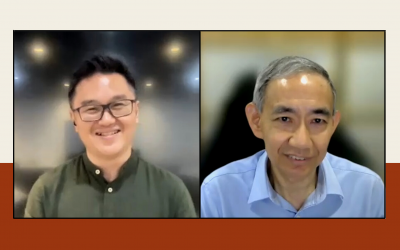In today’s Volatile, Uncertain, Complex and Ambiguous (VUCA) world, the need to manage transformational change is becoming very critical. While the scholastic contributions of Kurt Lewin (1950’s) and Warrant Bennis (1970’s) on Planned Change are still cited by writers and educators on the subject of change management. Many managers today seem to still be searching of practical ideas to guide their change efforts rather than proven models or strategies.
3 Contemporary Principles of Change Management
Principle 1: Advocate constant adaptation rather than refreezing or seek stabilization
The Lewinian concept of categorizing change management into 3 distinct stages: [1] creating the motivation to change (unfreeze); [2] progresses through communication and empowerment of people to embrace new ways of working (change); and finally [3] ends with returning the organization to a new stabilized state (refreeze) would appear to be too clinical in today’s VUCA world.
In a disruptive world with accelerated speed of change, the time to “unfreeze” is getting very short, change itself is “messy” or complex, and there is hardly time to allow people to “refreeze”. The organization seems to be constantly in a state of flux with more changes introduced including new people, systems, structures and technologies in both planned and unplanned fashion.
The need for constant adaptation to the changing environment seems more needed rather than to refreeze or seek to create a new stabilized state.
The “Double S-Curve” change theory claims that before an organization reaches its new steady state, it ought to put people on a “change treadmill” moving on to the next phase of change ahead of competition!
Principle 2: Accept dynamic planned change rather than static planned change
It has been known for more than 4 decades that managing the planned change process needs to be flexible to accommodate unanticipated variables or events.
In the VUCA world, the change process is inherently beset with not just more unanticipated but also unpredictable and ambiguous variables. According to a phrase that is commonly cited by a number of senior Chinese leaders during the Cultural Revolution era, managing the change process in a VUCA world is somewhat akin to: “Let’s figure out where the stones are as we cross the river (摸着石头过河)”. There are certain actions that can only be decided when the information or situation becomes clearer as the change process progresses. This Chinese phrase vividly conjures up an image of fluidity, chaos and risks in carrying out a revolutionary (shift and not drift) type of change.
Given the VUCA nature of today, the change process can only define some key desired outcomes, and not a comprehensive plan of actions developed over a stretched period of time.
Regular reviews and alterations made to the conceptual change plan have to happen throughout the change journey. Getting people to be resilient in accepting modifications to a master change plan is a required mindset.
Principle 3: Adopt a strategy of integrated change rather than focusing primarily on human systems
In the book “The Planning of Change” published by W.G. Bennis, K.D. Benne and R. Chin, planned change is described as a “conscious, deliberate, and collaborative effort to improve the operation of a human system.” In 1997, Richard Pascale et al wrote in the HBR article “Changing the Way we Change” advocated 3 practical interventions to increase the quantity as well as the quality of employee involvement in the change process. This article yet again underscored the central focus of change management in the past, i.e. leading people through the change transition. While it is true that people are an important part of the change process, the VUCA world has brought about a greater degree of sophistication with several components interacting with each other more intensely. Some common system components are technology, organization structure, grand strategy, business process, corporate values, and people.
The people factor is only one key component of change as an organization embarks on transformational changes.
To reap the success of change management, a more integrated approach has to be taken. One illustration might be that the organization structure has to be reconfigured with the introduction of new technology, creation of new workflow process, and the induction of new employees of different digital skillsets.
For transformational changes, applying the outdated models of merely involving and/or upskilling the existing pool of employees to change the ways they used to do things is insufficient.
你可能也喜欢
How Effective is Telecommuting as a Work Structure?
It is without a doubt, and most agreed there are attractive benefits for telecommuting as a work method both for the organization and employees. The question remains - is telecommuting an effective work method if it is not a forced decision?
Viewing Organizational Learning as a Synthesis across Time Frames
The COVID-19 pandemic was a wake-up call that has challenged many of our assumptions and mental models, at the same time taught us deep lessons on system thinking from an organizational learning perspective.
适应不同部门和文化的领导力
领导力最终体现在一个人如何选择在不同的环境中专业地和个人地实践他或她的信念。资深领导者Larry Choi先生通过他在不同部门和文化中与人沟通的真实经历分享了他的领导之旅。




